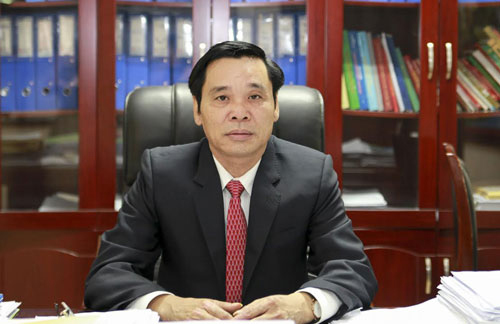Hanoi's agriculture sector eyes 2.5-3% expansion in 2021-2025
The agricultural sector has always been seen as a pillar of Hanoi’s economy.
Director of the Hanoi Department of Agricultural and Rural Development Chu Phu My shared with The Hanoi Times the city’s visions for agricultural development in the next period.
| Director of the Hanoi Department of Agricultural and Rural Development Chu Phu My. |
What is your assessment of Hanoi’s agricultural performance in the past five years?
The 2016-2020 period was a difficult period for Hanoi’s agricultural sector with challenges from natural disasters, diseases, and the latest being the Covid-19 pandemic.
The sector, however, continued to average positive growth of 2.6% during the last five years, while production has now focused on the market demand, seen as a key step to ensure sustainable growth and job security for millions of farmers.
The average income per capita in early 2021 stood at VND55 million (2,411), around VND6 million ($263 million) higher than the original target.
The landscape of the rural areas has also been transformed drastically with the majority of households having phones, and 100% of communes have internet access.
Hanoi has 13 districts and 368 out of 382 communes qualified for new-style rural area standard, two years in advance of the original target, making the city a locality with the largest number of communes with such standard.
What were the main reasons for such achievements in the past years, and what priorities should the city focus on?
Hanoi has always considered agriculture, farmers, and rural areas as the key pillars of the economy. In 2016-2020, the city allocated VND80.6 trillion ($3.53 billion) for rural development despite budget constraints. Of the total, funds earmarked for the national program on promoting new-style rural areas and agricultural restructuring amounted to VND62.4 trillion ($2.73 billion).
While there have been improvements in this sector, there are issues that should be further addressed, including the low contribution of hi-tech farming in total production value, along with low productivity.
Moreover, the city should address the widening gap between living standards in urban and rural areas, and the lack of sustainability in efforts for poverty reduction, especially in remote and highland areas.
What are the targets that Hanoi set for the agriculture sector in the 2021-2025 period?
The city targets the sector to grow by 2.5-3% per year during the next five years. By 2025, 100% of districts in Hanoi to qualify for new-style rural area standards, while there would be no poor households in the city by 2025.
To realize these goals, the important factor would be to revise the growth model and restructure the agricultural economy based on the adoption of science, technology, and innovation.
The sector must focus on large-scale production with the high and consistent quality of farm produce.
The city should continue to provide more supporting policies to ensure efficiency in the utilization of agricultural lands and the application of technologies in promoting modern agricultural production models. By 2025, hi-tech farming should at least contribute 70% of total production.
Thank you for your time!












